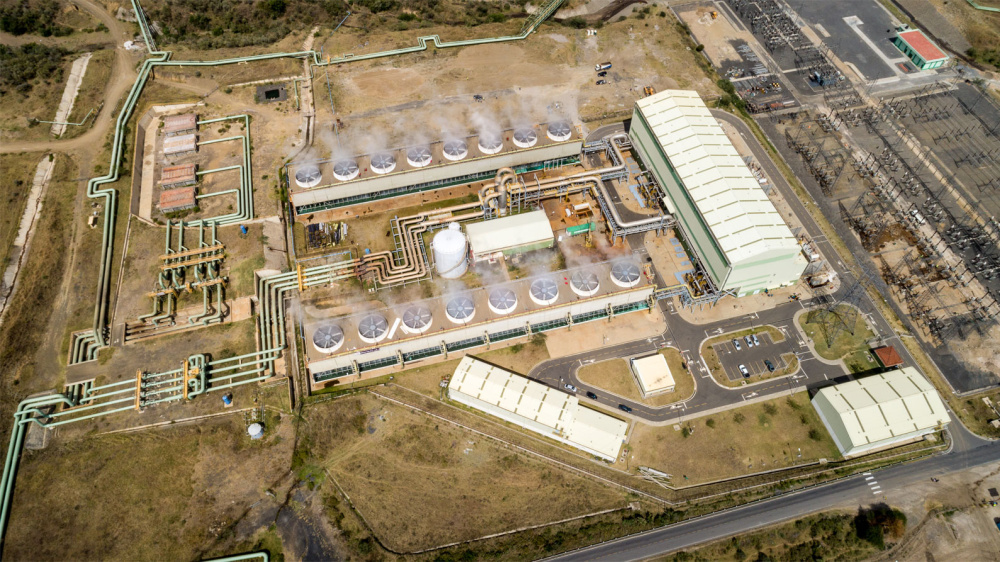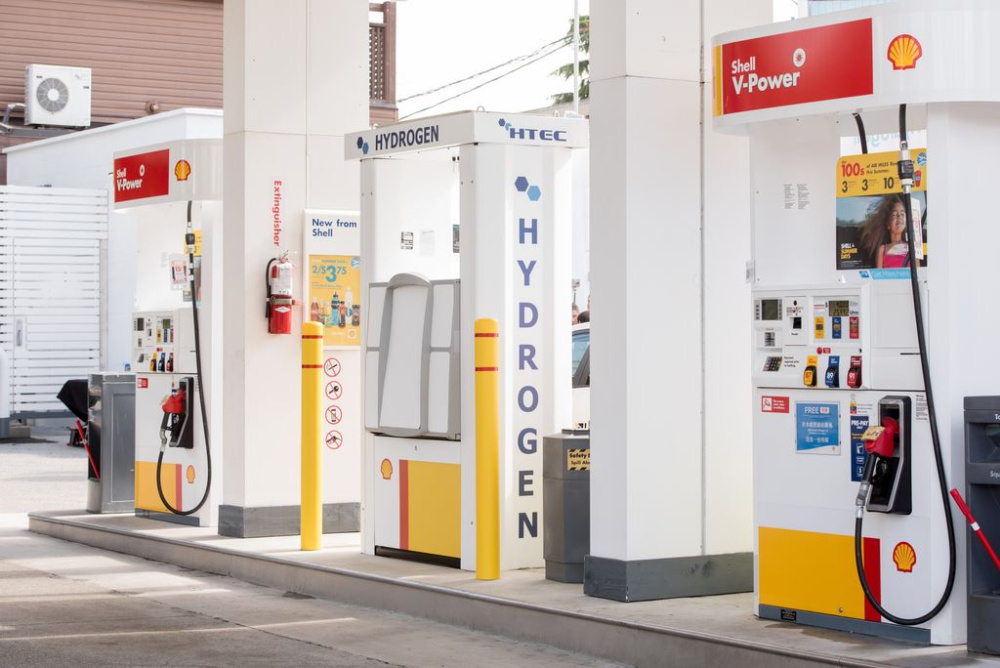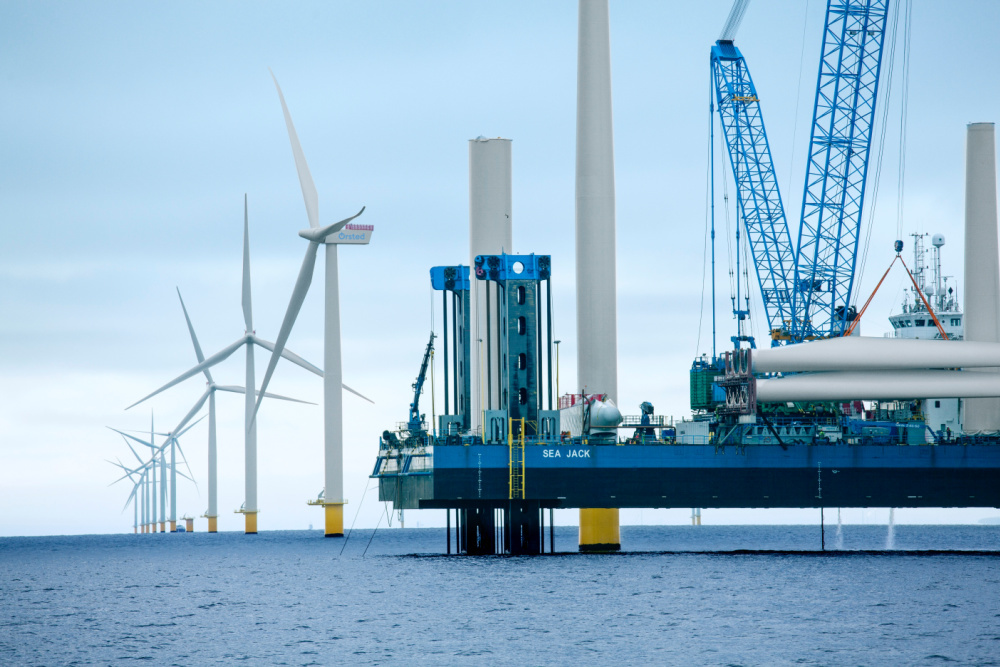As U.S. politicians shape policy that could transform the nation’s clean energy future, electric utility companies are adding more renewable energy generation to the mix to diversify and green grids.
This comes as companies, both in the U.S. and abroad, push forward with renewable energy projects in areas such as geothermal land hydrogen.
Service provider Liberty Energy Inc. has moved into the geothermal space, investing $10 million in geothermal energy tech company Fervo Energy. On the other side of the world, Shell Plc is teaming up with China’s Shenergy Group to build a hydrogen refueling network in Shanghai, marking a first for the European energy major in Asia.
Here’s a look at some of this week’s renewable energy news.
Batteries
Australia Gives Neoen Green Light for Big Battery
Renewable energy producer Neoen has secured approval for its Hornsdale Power Reserve (HPR) facility to deliver inertia services to help stabilize South Australia’s grid, the company said July 27.
The 150-MW battery storage facility, which will be powered by Tesla’s Virtual Machine Mode, is being called the world’s first big battery to deliver grid-scale inertia services. Its use was approved by the Australian Energy Market Operator.
Neoen explained in a news release that inertia, traditionally provided by gas- or coal-fired generators, is needed during normal operation of the electricity network and after major disturbances.
“The closing of thermal power plants and increasing volumes of renewable energy are resulting in inertia shortfalls in the grid, a serious network issue that batteries are now able to overcome,” Neoen said. “In addressing these challenges, this innovative solution represents a breakthrough of global significance.”
HPR can contribute about 2,000 MW of equivalent inertia, or about 15% of the predicted shortfall in the state’s network, Neoen said.
Geothermal
Geothermal Deployment Gets $165 Million Boost from DOE
The U.S. Department of Energy (DOE) said July 28 it will provide up to $165 million to expand geothermal development in the U.S.
“The U.S. has incredible, untapped geothermal potential beneath our very feet, which can be harnessed to meet our energy demands with a round-the-clock, clean renewable resource,” U.S. Secretary of Energy Jennifer M. Granholm said in a news release. “Leveraging the extensive knowledge, technology, skill, and experience of the oil and gas sector is the perfect way to tackle barriers to geothermal deployment while also giving fossil-fuel-based communities and workers a role in the transition to clean energy.”
Pending Congressional budget appropriations, plans are to initially provide $10 million to a consortium of experts as part of the Geothermal Energy from Oil and Gas Demonstrated Engineering initiative to develop a roadmap to address technology and knowledge gaps. The roadmap would then be used to fund four years of research to address those gaps with up to $155 million. The DOE plans to select a consortium by February and begin the initiative in May.
Liberty, Fervo Energy Partner to Tap Unconventional Geothermal Resources
Service provider Liberty Energy has moved into the geothermal space, investing $10 million in geothermal energy tech company Fervo Energy.
Liberty said July 25 that it will leverage its subsurface engineering and pressure pumping assets to help create underground networks to mine the earth’s heat for electricity production.
“Our technical expertise in underground reservoir fluid flow and network fractures should help improve project economics and the scalability of geothermal as an energy source,” Liberty CEO Christ Wright said. “Unconventional geothermal applications offer a potential pragmatic solution for a reliable source of low-carbon electricity, and we’re excited to be a part of the journey.”
Kenya’s KenGen Adds 86 MW to Grid from Geothermal Plant
The Kenya Electricity Generating Co. (KenGen) said it injected an extra 86 MW of power into the national grid from its geothermal plant July 26.
KenGen, which produces the bulk of Kenya’s electricity, generates 799 MW from geothermal steam which is found deep underground the Rift Valley and is used to drive large turbines that generate the power.
It has a total installed capacity of 1,904 MW, with the rest coming from dams and wind farms.
The company is state-controlled and the launch of the new capacity shows Kenya’s commitment to generating power from clean energy sources, KenGen said in a statement.
Electricity connections have more than tripled to 8.6 million from 2.3 million in the last decade, said Kenyan President Uhuru Kenyatta, who presided over the launch of the additional capacity at the plant near the Rift Valley town of Naivasha.

Puna Geothermal Expansion Project Being Planned
Developers of the Puna Geothermal Venture Repower project in Hawaii have filed an environmental impact statement preparation notice regarding plans to replace its current 12 operating power-generating units with up to four energy converters.
The project, according to a document filed with Hawaii’s Office of Planning and Sustainable Development, would increase production of renewable energy at the existing site with more efficient units that are smaller and quieter. Phase 1 of the project involves ramping power production from 38 MW to 46 MW, while Phase 2 would increase production to 60 MW.
The Ormat Technologies-operated project, which would also include the installation of new piping and reduction of existing steel structures, is located on a site of about 815 acres in the Kīlauea Lower East Rift Geothermal Resource Subzone. Construction and operation of the facility has been previously authorized by regulators.
Hydrogen
Shell Sets Up Venture to Build Shanghai Hydrogen Refueling Network
Shell said on July 29 it will set up a joint venture with China’s Shenergy Group to build a hydrogen refueling network in Shanghai, the first of its kind for the European energy major in Asia.
The joint venture plans to build six to 10 hydrogen refueling stations in Shanghai and the surrounding Yangzte River Delta in the next five years and up to 30 stations by 2030.
These 30 stations could supply hydrogen fuel to about 3,000 trucks or buses every day, Shell said in a statement.
The new entity will source low-emission industrial by-product hydrogen from the local chemical plants in the near term and seek to produce and supply green hydrogen in the long run, Shell added.

Cepsa, Invenergy Partner with Ohmium
Madrid-based Cepsa has teamed up with Ohmium International, a PEM electrolyzer specialist, to develop green hydrogen projects in the Iberian Peninsula.
In a news release July 27, Cepsa said initial focus will be on building small-scale projects with Ohmium’s modular PEM electrolyzers and possibly providing up to 300 MW of installed hydrogen production capacity to Cepsa. The agreement also includes collaboration on research and development initiatives.
The agreement will launch Cepsa’s first renewable hydrogen project, it said.
The announcement followed news July 22 that Ohmium is also working with U.S.-based Invenergy to develop its first green hydrogen project. The 5-acre Sauk Valley Hydrogen project in Illinois will utilize power from Invenergy’s co-located solar plant. The hydrogen project is expected to generate up to 52 tons of hydrogen annually, store up to 400 kilograms of hydrogen on site and provide hydrogen to Invenergy’s 584-MW Nelson Energy Center, according to a news release.
Brazil’s Unigel to Build Green Hydrogen Plant
Brazilian chemical maker Unigel on July 25 announced plans to build a green hydrogen plant in the northeastern state of Bahia, with an initial investment of $120 million and the goal of making it one of the largest of its kind in the world.
The plant is expected to start operations by the end of 2023, Unigel said in a statement. The first phase of the project foresees a production capacity of 10,000 tonnes of green hydrogen and 60,000 tonnes of green ammonia per year.
The electrolysis process for hydrogen production at the Bahia plant will be carried out in equipment supplied by Germany’s ThyssenKrupp Nucera, controlled by Thyssenkrupp, totaling 60 megawatts.
Green hydrogen and ammonia produced in the industrial city of Camacari will be offered to customers looking to decarbonize their operations, Unigel said.
A second phase of the Camacari project, seen happening in 2025, is expected to quadruple the output of green hydrogen and ammonia, Unigel said.
RNG
Archaea Signs 5-year RNG Agreement with UGI Utilities
Archaea Energy Marketing LLC signed a sale and purchase agreement to supply UGI Utilities Inc. with 331,785 MMBtu of renewable natural gas (RNG), according to a July 27 news release.
A subsidiary of RNG producer Archaea Energy Inc., Archaea Energy Marketing will provide the gas on an annual basis beginning July 1 of this year for five years from its Assai RNG facility in Pennsylvania. Deliveries will be made for a fixed fee under the agreement, which was recently signed and approved.
Pennsylvania-based UGI Utilities is the natural gas and electric utility subsidiary of energy product and service distributer UGI Corp., which specializes in supplying natural gas, liquified petroleum gas, electricity and renewables.
Solar
US Solar Company Plans Panel Factory in Panama
A small U.S. solar company with no manufacturing experience on July 26 announced plans to open a solar panel factory in Panama to help the American industry reduce its reliance on Chinese-made goods.
Universal Solar America LLC, an Arizona company that helps solar project developers procure panels, said its planned facility will help U.S. companies avoid tariffs, shipping delays and other challenges that have scuttled a supply chain comprised primarily of products made in Asia.
The company expects to be producing panels at the facility in a free trade zone in Colon, Panama by the end of this year, Universal Solar CEO John Bereckis said. It will have an initial annual capacity of 600 megawatts, which it could double early next year.
The company has taken orders for more than 400 MW so far from undisclosed customers and is negotiating its first round of funding. Shipments from the facility should be able to reach any U.S. port in about five days.
Wind
Ørsted Acquires Wind, Solar PV Developer Ostwind
Ørsted is entering the onshore wind and solar photovoltaic (PV) markets of Germany and France with its agreement to acquire a 100% equity interest in Ostwind.
The offshore wind company said July 22 it had entered an agreement to acquire Ostwind, which it said has an enterprise valuation of EUR 689 million. “Today, Ostwind has an attractive portfolio of 152 MW in operation and under construction, approximately 526 MW in advanced development, and approximately a further 1 GW in its development pipeline,” Ørsted said in a news release.
Plans are for Ostwind’s existing management team to continue to run the business, which will be integrated into Ørsted’s Onshore business unit over time. The transaction is expected to close in second-half 2022 subject to merger and foreign investment clearances, Ørsted said.
The acquisition, which is in line with Ørsted’s goal to expand its European footprint, follows its 2021 acquisition of Brookfield Renewable’s Ireland and U.K. onshore wind platform and its recent into the Spanish onshore market.

New York Announces Third Offshore Wind Solicitation
New York is seeking renewable energy to power at least 1.5 million New York homes in its third offshore wind solicitation, Governor Kathy Hochu said July 27.
Administered by the New York State Energy Research and Development Authority, the first phase includes a $500 million investment in offshore wind ports, manufacturing, and supply chain infrastructure.
Release of the third offshore wind solicitation is the next step toward achieving New York’s Climate Leadership and Community Protection Act (Climate Act) goal to develop 9,000 megawatts of offshore wind by 2035, the authority said.
The Biden administration is partnering with 11 East Coast states to accelerate development of offshore wind facilities and create jobs by supporting a domestic supply chain for the industry, the White House said last month
Hart Energy staff and Reuters contributed to this article.
Recommended Reading
Texas LNG Export Plant Signs Additional Offtake Deal With EQT
2024-04-23 - Glenfarne Group LLC's proposed Texas LNG export plant in Brownsville has signed an additional tolling agreement with EQT Corp. to provide natural gas liquefaction services of an additional 1.5 mtpa over 20 years.
US Refiners to Face Tighter Heavy Spreads this Summer TPH
2024-04-22 - Tudor, Pickering, Holt and Co. (TPH) expects fairly tight heavy crude discounts in the U.S. this summer and beyond owing to lower imports of Canadian, Mexican and Venezuelan crudes.
What's Affecting Oil Prices This Week? (April 22, 2024)
2024-04-22 - Stratas Advisors predict that despite geopolitical tensions, the oil supply will not be disrupted, even with the U.S. House of Representatives inserting sanctions on Iran’s oil exports.
Association: Monthly Texas Upstream Jobs Show Most Growth in Decade
2024-04-22 - Since the COVID-19 pandemic, the oil and gas industry has added 39,500 upstream jobs in Texas, with take home pay averaging $124,000 in 2023.
Shipping Industry Urges UN to Protect Vessels After Iran Seizure
2024-04-19 - Merchant ships and seafarers are increasingly in peril at sea as attacks escalate in the Middle East.




